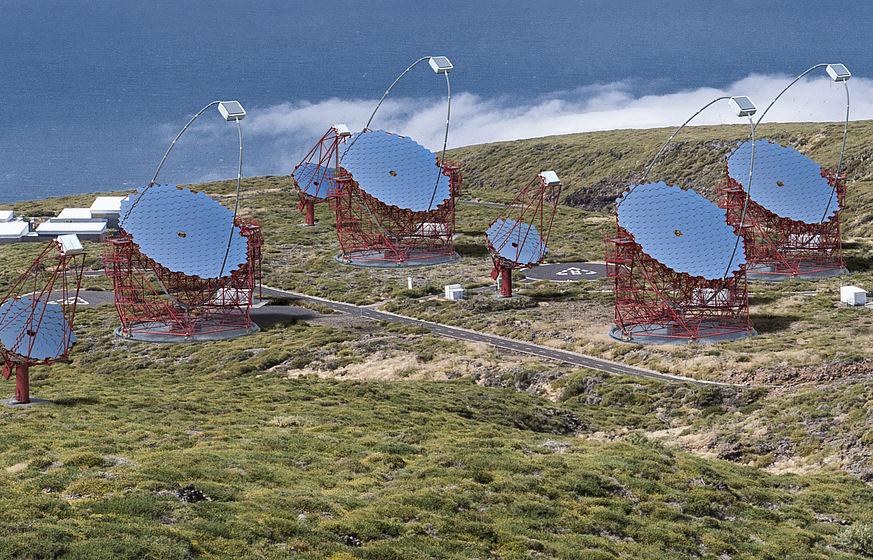Neural Networks Show Potential For Identifying Gamma Rays
25. 8. 2020 | Swiss National Supercomputing Centre | www.cscs.ch
With the Cherenkov Telescope Array (CTA) that is currently under construction, researchers hope to observe highly energetic gamma rays that could lead to the discovery of new objects in and outside of our galaxy and even unravel the mystery of dark matter. However, identifying these gamma rays is not easy. Researchers from the CTA consortium are now trying to perfect it with neural networks trained on the “Piz Daint” supercomputer.
Upon completion in 2025, the Cherenkov Telescope Array (CTA) will be the largest gamma-ray observation telescope array ever built. More than 100 telescopes with diameters between 4 and 23 metres are being installed in the northern and southern hemispheres, at the Roque de los Muchachos Observatory on the Canary Island La Palma and in the Atacama Desert in Chile. The telescopes are designed to comprehensively record flashes of light induced by the gamma rays travelling through the cosmos that strike the Earth's atmosphere.

To improve the discrimination procedure between hadrons and gamma rays, and thus the sensitivity of the observatories, Lyard and his team have now attempted to distinguish them from each other using deep convolutional neural networks (CNNs) trained on the CSCS supercomputer "Piz Daint". Although there is still much room for improvement in the CNNs architecture, the researchers are convinced that these and other machine learning approaches could help get the best scientific output from the CTA observatory.
Read more at CSCS
Image Credit: CSCS
-jk-




